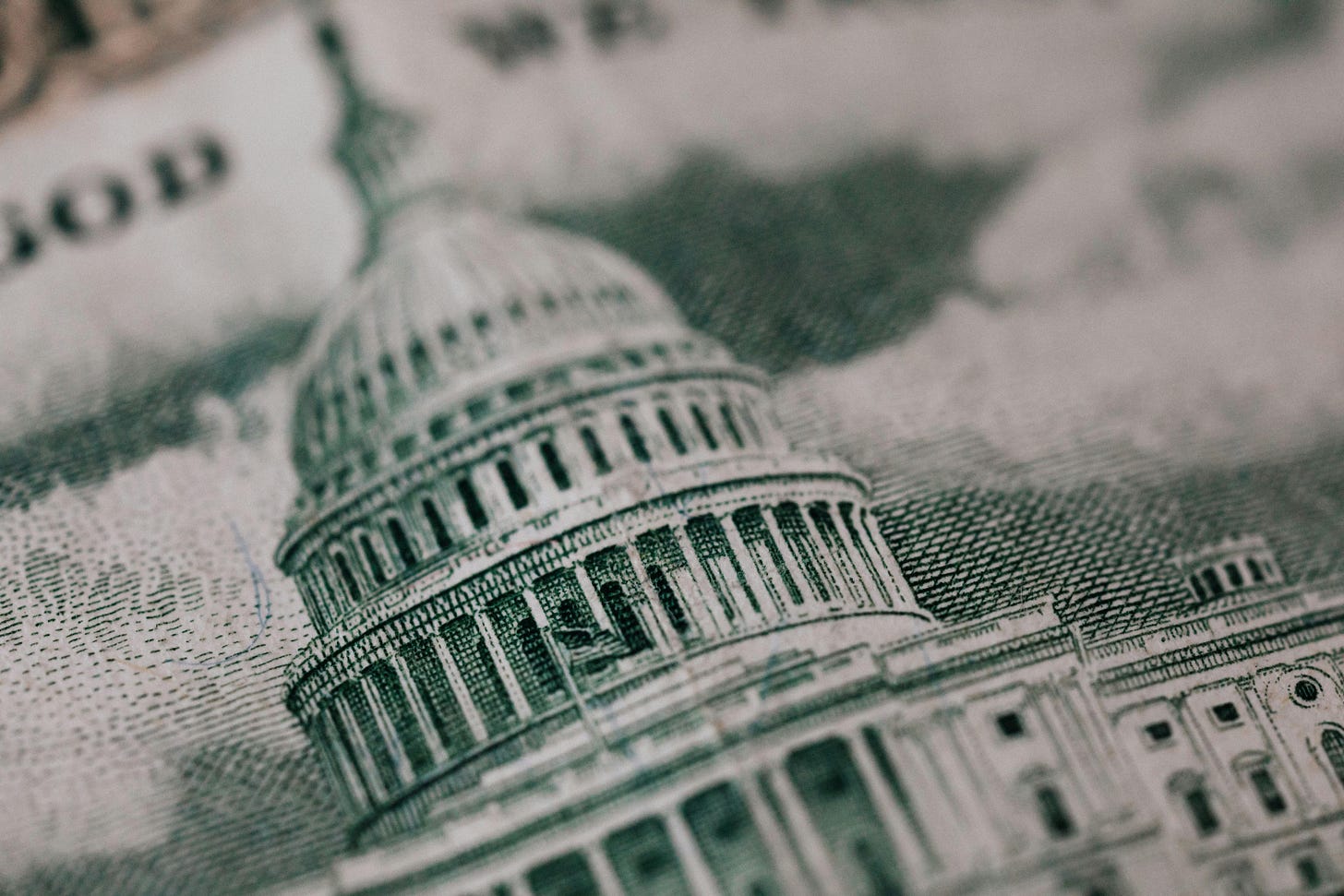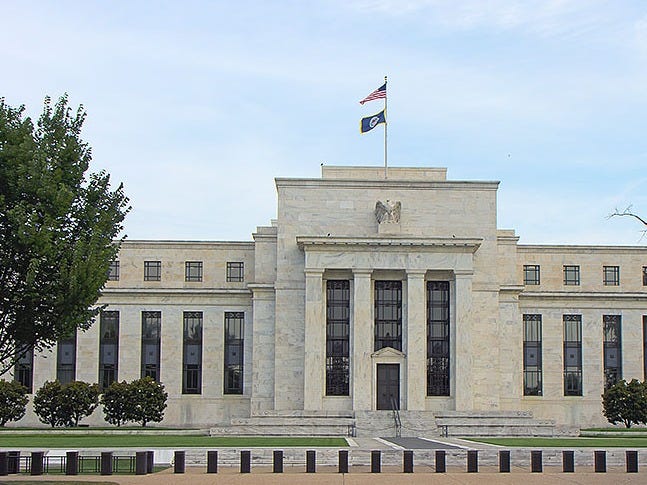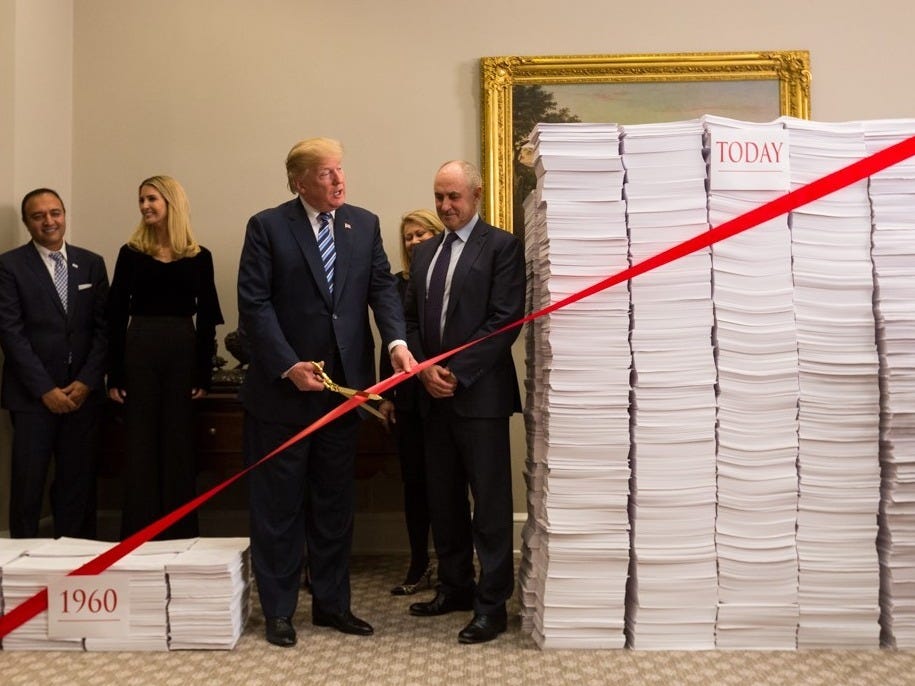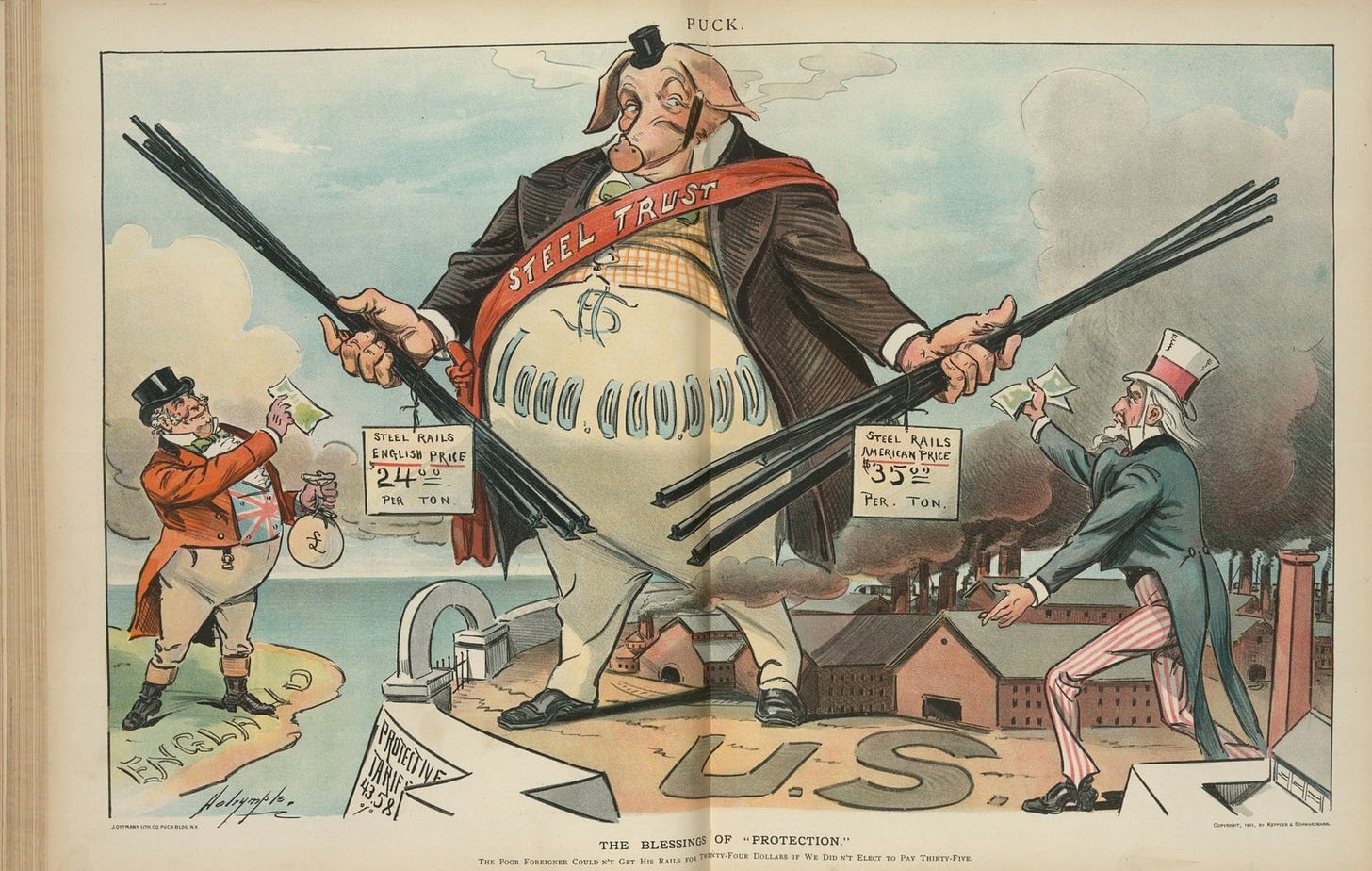6 Priorities for Trump's First 100 Days in Office | This Week's Economy Ep. 95
Today we celebrate President Trump's inauguration. Tomorrow, it's time to get down to business!
Hello Friends!
Today, we mark the inauguration of Donald J. Trump as President of the United States. As he takes office for the second time, many are eager to see significant policy shifts to boost the economy, create jobs, and empower American businesses. The first 100 days will be crucial in shaping the path to prosperity through executive actions, strong leadership, and strategic pressure on Congress. This period could see bold moves to cut government spending, unleash energy potential, and create opportunities for workers and businesses.
In today’s episode, I discuss the most effective moves the Trump administration can make in the first 100 days. Tune in on YouTube, Apple Podcast, or Spotify, and visit my website for more information.
1) TACKLE INFLATION: CUT SPENDING

Persistent Inflation: Americans feel the pressure of persistent inflation, a key factor driving voter concerns in recent elections. To address this, President Trump must focus on the root causes of inflation rather than just temporary solutions like tax exemptions and credits. Real, long-term economic stability requires tackling the underlying factors driving up prices.
Federal Spending Explosion: In the wake of the pandemic, federal spending skyrocketed from $4.45 trillion in 2019 to over $6.5 trillion in 2020. This unsustainable surge fuels inflation created by the Federal Reserve, exacerbates the national debt, and limits economic growth. President Trump must prioritize reclaiming unspent COVID-19 relief funds, cutting wasteful programs, and returning discretionary spending to pre-pandemic levels.
Trump Can Freeze Spending: Through executive orders, Trump can immediately freeze unnecessary expenditures and direct federal agencies to identify redundant programs for cuts. Additionally, Congress must pass a long-term budget cap, linking future spending growth to inflation and population increases. These moves will signal fiscal discipline, reduce deficits, and create a solid foundation for tax cuts and deregulation.
Related:
2) OPEN UP ENERGY EXPLORATION

Biden’s Energy Executive Order: President Biden signed an offshore drilling ban that undermines America's energy independence in a last-minute flurry of executive actions. This move weakens our energy security and job growth, relying on executive fiat instead of sound, market-driven policies. America truly needs energy strategies that empower our citizens and foster long-term prosperity.
Make Energy Great Again: Energy independence was one of the defining successes of Trump’s first term, and it must once again be a cornerstone of his second. Swift executive orders can undo the Biden administration’s anti-energy agenda by reopening federal lands and offshore areas to oil and gas exploration. Streamlining permits for energy infrastructure projects, including pipelines and refineries, will ensure affordable energy for American families and businesses.
Restore U.S. Energy Dominance: Reducing regulatory red tape for domestic energy production will bolster economic growth and strengthen America’s geopolitical position by reducing its reliance on foreign energy sources. Given global instability, restoring U.S. energy dominance is an economic and national security imperative.
Related:
3) GET AMERICANS BACK TO WORK
Current Labor Landscape: While the unemployment rate is low, labor force participation remains below pre-pandemic levels, with far too many Americans still sidelined from the workforce.
Fix the Social Safety Net: To foster self-sufficiency and reduce dependency, we must implement welfare reforms that link benefits to work requirements, particularly for programs like Medicaid and food stamps. Encouraging work over dependence on the government will strengthen individuals and the economy.
Reform “Entitlements”: Welfare reform is critical for long-term fiscal health. Programs like Social Security, Medicare, and Medicaid now account for nearly 70% of the federal budget, and their current trajectories are unsustainable. Politicians must tackle these challenges head-on, with solutions like raising eligibility ages and transitioning Medicaid to block grants for states. These reforms are necessary to preserve a stable economic future for generations.
Related:
4) UNLEASH FREE MARKETS
Build on Last Term’s Success: President Trump’s first term saved businesses an estimated $200 billion annually through deregulation, and his second term must build on this success. Expanding the "two-out, one-in" rule—where two regulations are eliminated for every new one enacted—will continue shrinking the regulatory state, freeing businesses to grow and thrive.
Undo Harmful Biden-era Regulations: Through executive orders, President Trump can reverse many of the damaging regulations imposed during the Biden administration, especially in areas like labor, energy, and the environment. Reducing red tape for small businesses, repealing restrictive labor laws such as those in the PRO Act, and eliminating unnecessary occupational licensing requirements will empower workers and business owners to innovate and create new opportunities.
A Better Regulatory Review Process: Establishing a Regulatory Reduction Commission will provide a dedicated mechanism to review and repeal outdated or unnecessary rules to ensure long-lasting regulatory reform. This will cement regulatory reform as an enduring part of government policy, promoting an environment where businesses and workers can flourish without excessive bureaucratic obstacles.
Related:
5) EXPAND FREE TRADE

Rising Costs Burden Americans: Inflation is already driving up the cost of goods, straining American families and businesses. Rising prices, from groceries to other necessities, are felt across the board.
Trump Trade Push: President Trump negotiated trade policies during his first term, such as renegotiating NAFTA into the USMCA, which is worse for Americans in many ways. However, tariffs on key imports have also had unintended consequences, raising costs for American manufacturers and consumers.
Agreements Over Tariffs: The new administration must pivot toward expanding free trade agreements and reducing tariffs, particularly on crucial intermediate goods for domestic production. Free trade, rather than protectionism, fosters healthy competition, lowers prices, and drives innovation. Removing tariffs will empower American businesses to thrive globally and reduce costs for American families.
Related:
Tariffs ‘Protect’ Insiders, While Americans Pay the Price in AIER’s The Daily Economy
6) RESTORE SOUND MONEY

Monetary Policy Makeover: Years of reckless fiscal and monetary policies have eroded the purchasing power of American families. The Federal Reserve’s balance sheet is still 75% larger than before the pandemic, distorting markets and contributing to ongoing inflation.
Shift to Rules-Based Policy: President Trump should advocate for a rules-based monetary policy, like the Taylor Rule, to focus on price stability and minimize arbitrary interventions by the Fed. Legislation to audit the Federal Reserve would introduce much-needed transparency and accountability to an institution that has exercised unchecked power over the economy.
Federal Reserve’s Core Responsibility: The Federal Reserve’s primary duty should be to maintain price stability. Using interest rate cuts to achieve short-term economic boosts only exacerbates inflation and further erodes the purchasing power of American families. The Fed must resist political pressures and focus on long-term solutions that preserve the dollar's value and protect economic freedom through a rules-based approach.
Related:
Trump’s second term begins with a clear mandate: get government out of the way and let people prosper. The clock starts today—let’s make it count.
Thanks for joining me in this episode of "This Week's Economy." For more insights, visit vanceginn.com and get even greater value with a paid subscription to my Substack newsletter at vanceginn.substack.com.
God bless you, and let people prosper!
Keep reading with a 7-day free trial
Subscribe to Let People Prosper to keep reading this post and get 7 days of free access to the full post archives.






